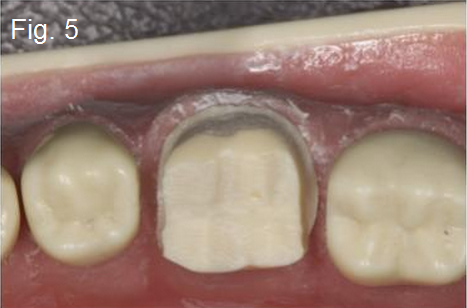Practice Management
Just Blame It on Your Dental Assistant
By Kevin Kwiecien on August 20, 2014 | 2 comments Remember the last time you were preparing a tooth for a crown and couldn't see at all because your mirror was soaked? And your patient's head was turned the wrong way? All the while you were thinking about the other side of the tooth – which you needed to go back and refine because you got tired and frustrated with it? I wonder if any of that could have been avoided if your dental assistant actually understood what you were doing…
Remember the last time you were preparing a tooth for a crown and couldn't see at all because your mirror was soaked? And your patient's head was turned the wrong way? All the while you were thinking about the other side of the tooth – which you needed to go back and refine because you got tired and frustrated with it? I wonder if any of that could have been avoided if your dental assistant actually understood what you were doing…Oh, and when you had enough space to pack your first layer of cord, your dental assistant was still holding the air/water syringe and suction, completely oblivious of the fact that you were ready for a fresh cotton roll and the cord-packer? Moving on to the next step in your crown-prepping system…
Wait a minute.
You do have one don't you? And you have shared it with your dental assistant, haven't you? I know, it sounds so simple – but if we don't have a system, the flow is different and unpredictable every time, right?
Get Your Dental Assistant Up to Speed On Your Systems
I assume you have a system for financial arrangements in your office, scheduling, new patient flow and for recalls/re-care. But do you have repeatable system for your crown preps?
Do you break proximal contacts first? Does your dental assistant actually know what that looks like so that he or she can appreciate what you are looking for and what it means? (Fig. 1-2)
 After breaking proximal contacts, do you do occlusal depth cuts and reduce the occlusal surface? Next, do you do buccal depth cuts and then reduce half of the buccal at a time? (Fig. 3-4)
After breaking proximal contacts, do you do occlusal depth cuts and reduce the occlusal surface? Next, do you do buccal depth cuts and then reduce half of the buccal at a time? (Fig. 3-4) I will usually finish the buccal and interproximal reduction before even looking at the lingual. If I move on to any other area of the tooth before I am done with a surface that I was trying to finish, I'm thinking – or dreading – of going back to it as I am trying to focus on a new area. How focused and intentional can I be with the new area if my brain is still wondering how in the heck I'm going to finish the area I left behind?!
I will usually finish the buccal and interproximal reduction before even looking at the lingual. If I move on to any other area of the tooth before I am done with a surface that I was trying to finish, I'm thinking – or dreading – of going back to it as I am trying to focus on a new area. How focused and intentional can I be with the new area if my brain is still wondering how in the heck I'm going to finish the area I left behind?! So, would it make sense to have your system that you use most of the time be one that you can trust? You might even have a plan for each quadrant or sextant in the mouth – or even specific teeth – so you can plan a predictable way to focus on the routine tough spot of each tooth.
So, would it make sense to have your system that you use most of the time be one that you can trust? You might even have a plan for each quadrant or sextant in the mouth – or even specific teeth – so you can plan a predictable way to focus on the routine tough spot of each tooth.By finishing the buccal of a lower molar – before starting depth cuts on the lingual – you are feeling a sense of accomplishment, pride, peace and most likely basking in the fact that you are near completion with the work you have done so far. (Fig. 5)
Knowing that I usually struggle with the disto-lingual of lower molars, I can place depth cuts and do the rest of the lingual, leaving only a few millimeters of tough work at the end, and not worrying about any unfinished business in any other areas of the tooth. (Fig. 6-7)
 If you actually have your mini-system that you developed for predictability and efficiency, a lot of the frustrations and difficulties inherent in dentistry will lessen, resulting in better flow and outcomes. Now, imagine that you share your mini-system with your dental assistant so that he/she knows where you are in the process.
If you actually have your mini-system that you developed for predictability and efficiency, a lot of the frustrations and difficulties inherent in dentistry will lessen, resulting in better flow and outcomes. Now, imagine that you share your mini-system with your dental assistant so that he/she knows where you are in the process.OMG – I know, right?
Look for a more in-depth article on mini-systems in an upcoming issue of the Spear Monthly Digest. The predictability and daily flow can increase exponentially, as well as team understanding and involvement.

Looking for answers to questions posed in this article? Take your questions to a few thousand of the industry's finest practitioners, including our esteemed Spear Faculty, on our discussion boards. Don't have access? Sign-up for free today.
Comments
September 7th, 2014
October 14th, 2014